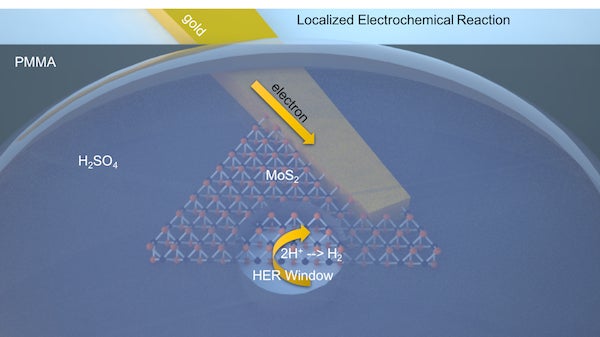Rice University, Los Alamos method quickly probes atom-thin materials’ ability to produce hydrogen
Rice University researchers have taken a deep look into atom-thick catalysts that produce hydrogen to see precisely where it’s coming from. Their findings could accelerate the development of 2-D materials for energy applications, such as fuel cells. The Rice lab of materials scientist Jun Lou, with colleagues at Los Alamos National Laboratory, developed a technique to probe through tiny “windows” created by an electron beam and measure the catalytic activity of molybdenum disulfide, a two-dimensional material that shows promise for applications that use electrocatalysis to extract hydrogen from water.
A technique developed by Rice University and Los Alamos National Laboratory will allow researchers to quickly probe atom-thick materials to measure hydrogen production. The Rice lab uses an electron beam to drill submicron holes through an insulating layer of poly(methyl methacrylate) to probe specific areas of nanoscale flakes. Illustration by Jing Zhang


